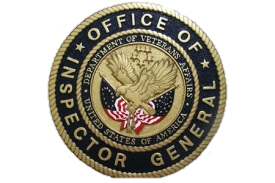The most effective compliance programs are scaled according to the size of the practice
First, it is required. From there, the government explains that an effective compliance program and plan should be designed, implemented, and enforced with the goals of preventing, detecting, and correcting any inappropriate and potentially criminal conduct within the health care practice. Every practice has the right to develop its own unique plan to properly suit its services. The most effective compliance programs are scaled according to the size of the practice, therefore, there is no single model template that can be implemented by adding your logo to the top. It is a living, breathing, working plan that is far more than a set of papers containing your practice’s policies and procedures.
The Office of Inspector General (OIG) suggested components of a compliance program includes fundamentals that a practice can use as a basis to create an effective program. This can be constructed in an electronic and/or paper format. It includes:
- Conducting internal monitoring and auditing: This includes a baseline audit and ongoing spot-check and monthly proactive reviews.
- Implementing compliance policies, procedures, guidelines, and practice standards: These include a set of principles that all team members are trained on and expected to follow
- Designating a compliance officer or contact: This is the person who takes the lead with compliance implementation and activities
- Conducting appropriate training and education: This is training that the office may already be doing; it must be documented and implemented properly
- Responding appropriately to detected offenses and developing corrective action: This demonstrates that the office is serious about compliance and will act quickly when an issue is found, and will work to prevent it from happening again
- Developing open lines of communication: This validates a culture of open communication where it is safe for anyone to report an issue
- Enforcing disciplinary standards through well-publicized guidelines: This policy clearly identifies the consequences of intentional fraud, and outlines the steps to be taken if repeated errors occur
- Clearing physicians, employees, vendors, and others through the OIG Exclusions Database: This proactive action exhibits the practice’s resolve to do business above board
Create a Code of Conduct for your practice
A Code of Conduct is created, circulated, discussed, and accepted by all members of the practice. This indicates their commitment to follow the compliance program’s tenets. These standards are to be made clear to employees and contractors, including the intent of the practice to take actions to uphold those standards.
A Initial Baseline Analysis is conducted at the beginning of the implementation of the program identify areas in need of correction and risk areas that may need to be the focus of the compliance plan, such as medical record documentation, coding, or patient financial inconsistencies. This demonstrates where the practice is starting before the program is implemented. It serves as a true baseline, and therefore, allows for the measurement of program effectiveness as it grows and develops. Ongoing and continuous auditing should be conducted as part of the active program to stay ahead of potential issues.
This analysis will include the following:
- Baseline Audit and report including error rates – Minimum of 5 charts per provider
- Practice Performance Profile and report – Includes practice fee analysis, a 3-year statistical analysis, and 6-month coding audit
- Explanation Of Benefits audit and report – Random review of 15 varied EOBs (Explanation of Benefits) with commentary
Finally, a compliance plan includes a process for responding to both staff and patient complaints, addressing identified offenses, and taking corrective action to prevent further similar offenses. If an internal investigation uncovers a material violation, a decision must be made, with counsel, whether to report the matter to the federal government. Disclosure may reduce sanctions; failure to disclose would likely result in penalties to the full extent allowed by the plan.
Once the program is implemented, maintaining it depends on the size and scope of the practice. But it’s estimated that a Compliance Officer’s (COs) time requirements average one to three hours per month to maintain a healthy, active compliance program.
Learn more about why you need an OIG Compliance Program.


Great source of reference!





